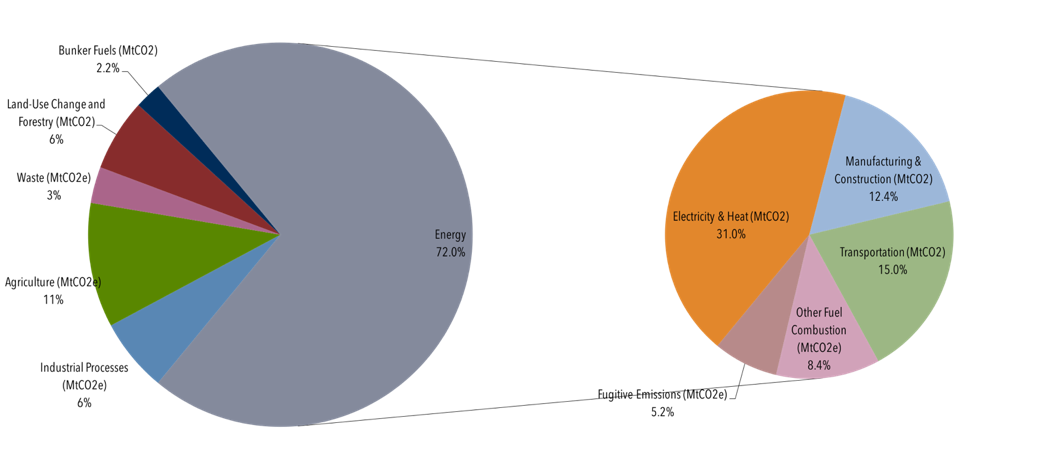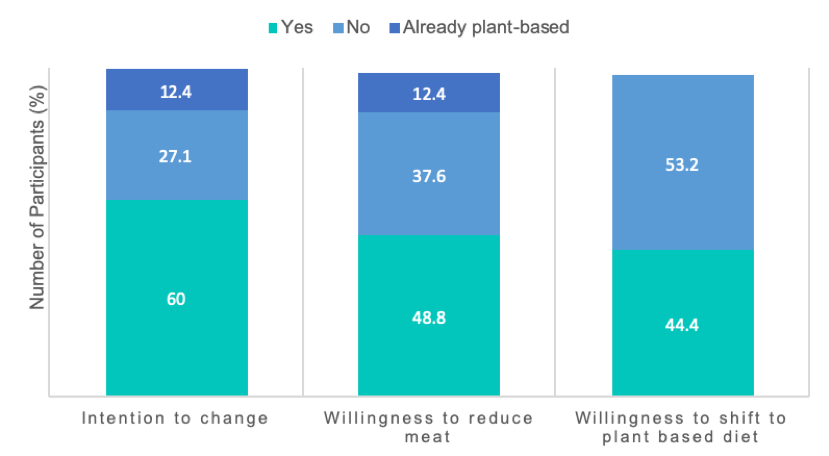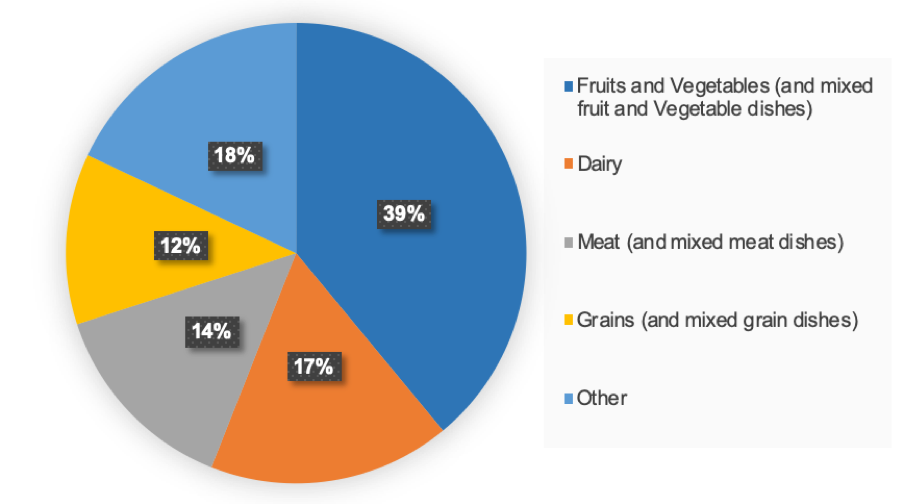 Arguments
Arguments
 Software
Software
 Resources
Comments
Resources
Comments
 The Consensus Project
The Consensus Project
 Translations
Translations
 About
Support
About
Support


Latest Posts
- Skeptical Science New Research for Week #14 2025
- Two-part webinar about the scientific consensus on human-caused global warming
- Sabin 33 #22 - How does waste from wind turbines compare to waste from fossil fuel use?
- Clean energy generates major economic benefits, especially in red states
- 2025 SkS Weekly Climate Change & Global Warming News Roundup #13
- Skeptical Science New Research for Week #13 2025
- Climate skeptics have new favorite graph; it shows the opposite of what they claim
- Sabin 33 #21 - How does production of wind turbine components compare with burning fossil fuels?
- China will need 10,000GW of wind and solar by 2060
- 2025 SkS Weekly Climate Change & Global Warming News Roundup #12
- Skeptical Science New Research for Week #12 2025
- Climate Fresk - a neat way to make the complexity of climate change less puzzling
- Sabin 33 #20 - Is offshore wind development harmful to whales and other marine life?
- Do Americans really want urban sprawl?
- 2025 SkS Weekly Climate Change & Global Warming News Roundup #11
- Fact brief - Is waste heat from industrial activity the reason the planet is warming?
- Skeptical Science New Research for Week #11 2025
- Visualizing daily global temperatures
- Sabin 33 #19 - Are wind turbines a major threat to wildlife?
- The National Hurricane Center set an all-time record for forecast accuracy in 2024
- 2025 SkS Weekly Climate Change & Global Warming News Roundup #10
- Fact brief - Is Greenland losing land ice?
- The Cranky Uncle game can now be played in 16 languages!
- Skeptical Science New Research for Week #10 2025
- Climate Adam: Protecting our Planet from President Trump
- Sabin 33 #18 - Can shadow flicker from wind turbines trigger seizures in people with epilepsy?
- Cuts to U.S. weather and climate research could put public safety at risk
- 2025 SkS Weekly Climate Change & Global Warming News Roundup #09
- Fact brief - Are high CO2 levels harmless because they also occurred in the past?
- Skeptical Science New Research for Week #9 2025
Archived Rebuttal
This is the archived Advanced rebuttal to the climate myth "Veganism is the best way to reduce carbon emissions". Click here to view the latest rebuttal.
What the science says...
|
Veganism has the potential to reduce global GHG emissions; however, it is not the only option and may not be the most achievable. |
Animal agriculture and GHG emissions
It has been estimated that 11-15% of human caused greenhouse gas emissions are a result of animal agriculture and livestock globally (FAO 2013.; Climate watch 2018). These gases include methane from enteric fermentation of cattle, nitrous oxide mainly from manure and carbon dioxide. The levels of each that are contributed vary depending on geographical location and the source of meat. Animal agriculture also uses vast amounts of other resources like land, fertilizer, feed and water, for example 8% of global water usage is taken up by livestock (Schlink 2010).

Figure 1: Global human caused GHG emissions divided by sector as estimated by the Center for Climate and Energy Solutions 2013
A film by Kip Anderson; ‘Cowspiracy: The Sustainability Secret (2014)’ rallied for veganism as being the best way to reduce GHG emissions with claims that it is the ‘solution to climate change, to stop eating animals’ and ‘the only way to sustainably and ethically live on this planet with seven billion other people is to live an entirely plant-based vegan diet.’ This message was backed up by unreliable sources, for example quoting work by Goodland (2009) that animal agriculture is responsible for 51% of GHG emissions, when it has been estimated to be 11-15% (FAO 2013., Climate watch 2018). Although veganism does have the potential to reduce GHG emissions associated with diet, it is important to consider other sectors that are also part of the problem.
Are people willing to change their diets for the environment?
Graça et al. (2015) showed that 60% of people have intention to change the amount of meat they consume; however, only 48.8% are actually willing to reduce their meat intake and only 44.4% are willing to completely change to a plant-based diet. Compared to other dietary changes people are willing to make to advantage the environment, only 46.9% of people are reducing their meat intake compared to 67.7% buying regional food and 62.9% eating seasonal fruit and vegetables (Tobler et al. 2011).
Eating meat is also perceived to have the least environmental impact compared to produce with excess packaging or inorganic and imported produce. This suggests that many people may not be willing to eat a plant-based diet because they do not perceive eating meat to be a large environmental issue. Global veganism would require a mass change in mindset; people that show an attachment to meat are unlikely to respond well when faced with direct approaches to try and elicit change as they will react in a defensive manner (Graça 2015). Films such as Cowspiracy may not be the most productive way to encourage reduced meat intake and may have the opposite effect of making them firmer in their reasons for eating meat (Graça 2015).

Figure 2: Willingness and intent of people to switch to a plant based diet using data taken from Graça et al. (2015)
Problems with the vegan diet
About one-third of all food grown is lost as waste, during transport and processing as well as at the retailer and consumer level (Gustavsson et al. 2011). Food waste is a contributor to food related GHG emissions (Scarborough 2014). Fruit and vegetables make up 39% of food waste with dairy and meat making up 17% and 14% respectively (Conrad et al. 2018). It is currently estimated that 4.2 trillion gallons of irrigation water and 780 million pounds of pesticides are depleted as a result of food losses and waste, most of which are used to produce fruit and vegetables (Conrad et al. 2018). With an increase in fruit and vegetable intake with a rise in vegan diets, the contribution of fruit and vegetable waste to GHG emissions and other depleted resources is likely to rise.
The large contribution of this waste attributed to fruit and vegetables is a result of retailer grading on its appearance due to the consumer avoiding disfigured produce. In an attempt to reduce the environmental burden of food, a reduction in the amount of waste on an individual level, specifically fruit and vegetables, is necessary, particularly if there is an increasing amount of these high-waste products due to more people switching to a vegan diet.

Figure 3: Proportion of waste attributed to different food groups by US consumers. Other comprises of groups all with a percentage of <10% including: candy, soft drinks, salty snacks, soup, potatoes and mixed potato dishes, nuts and seeds, Mexican dishes, eggs and mixed egg dishes, table oils and salad dressing. Data taken from Conrad et al. (2018).
Carlsson-Kanyama (2009) showed that, ‘foods that commonly have low emissions, such as fruits, when they are transported by air, may have emissions as large as some types of meat.’ For example, domestic pork and chicken generate 9.3 and 4.3 kg of CO2-equivalent per kg of product, respectively, whereas fresh tropical fruit transported by plane generates 11 kg CO2-equivalent per kg of product. Therefore, although eating a vegan diet has the potential to reduce emissions, other types of foods that also have a large environmental impact should be reduced, which are not necessarily facilitated by a vegan diet. Heller (2013) noted the environmental impact of vegetables produced in heated greenhouses can be greater than animal-derived products, showing that it is important to think about the farming and transportation of all produce, reducing intake of out-of-season and tropical produce, not just livestock, to reduce the environmental impact of a diet.
Land management strategies are an important factor to consider when trying to mitigate some of the emissions associated with growing fruit and vegetables. Zomer (2017) claim that "land management strategies can increase soil carbon stocks on agricultural lands with practises including addition of organic manures, cover cropping, mulching, conservation tillage, fertility management and rotational grazing." The importance of this, as highlighted by Zomer (2017), is that mismanaged land can release carbon from topsoil into the atmosphere, with as estimated 50-70% of carbon soil stocks already lost in cultivated soils. Regard for the use of sustainable land management strategies with the increase in demand for non-meat produce that comes alongside veganism would be important; however, these management strategies, such as rotational grazing and organic manures, require livestock and therefore do not fit with a vegan diet. Perhaps rather than full veganism, it is necessary to consider a balance of sustainably-produced food using the land management strategies suggested by Zomer (2017).
Vegan vs. Vegetarian vs. meat diets
A vegan diet can reduce GHG emissions by 26% compared to the average meat-eating UK diet and a vegetarian diet could see a 22% reduction (Berners-Lee 2012; Saxe 2013; Scarborough 2014). Recent research by Kim et al. (2019) compared a flexitarian two-thirds vegan diet (which involved eating vegan for 2 meals per day and no restrictions on the third meal) to a fully vegetarian diet and found that in 95% of countries studied, the two-thirds diet produced less GHG emissions than the vegetarian diet. Therefore, there are arguments that a flexitarian diet with moderate amounts of meat is better than a vegetarian diet that cuts out meat completely, showing that stopping meat intake completely does not necessarily reduce dietary GHG emissions and cannot be assumed to do so in a vegan diet.
What are the alternatives?
Increasing understanding of livestock emissions may mean there is potential to partially mitigate the high levels of GHG emissions associated with livestock, without abandoning livestock production. For example, adding fumaric acid to goat feed has shown to reduce their methane production by 18-31% (Li 2018). However, this additive has been less successful in cattle, the largest culprits of methane gas production. Alternatively, adding seaweed (Asparagopsis armata) to the diet of dairy cow can reduce methane emissions by up to 67% (Roque et al. 2019)
Global veganism has the potential to reduce global GHG emissions; however, it is not the only option and may not be the most achievable. A combination of moderated red meat, lamb, and dairy intake along with sustainable farming techniques and locally-sourced produce to avoid airfreight would have a positive impact on the environment. However, it is important not to overemphasize one source of GHG emissions, for example livestock, as it can distract from the need to reduce human-caused emissions across a range of sectors. Films like ‘Cowspiracy’ that oversimplify the problem in order to advocate a single policy outcome may be similarly counterproductive as films that deny the problem in the first place.
Related research
Recent work by Allen et al. 2018 has highlighted that standardised measures of greenhouse gases such as GWP100 or GWP 20 can debated as to whether they represent accurate measurement of methane and its effects which may be may be overstated with these metrics. A future blog post discussing this is in the works.
References:
Allen, MR., Shine, KP., Fuglestvedt, JS., Millar, RJ., Cain, M., Frame, DJ., Macey, AH. (2018). A solution to the misrepresentations of CO2-equivalent emissions of short-lived climate pollutants under ambitious mitigation. Npj Climate and Atmospheric Science, 1:16. [Online].
Berners-Lee, M., Hoolohan, C., Cammack, H., Hewitt, CN. (2012). The relative greenhouse gas impacts of realistic dietary choices. Energy Policy, 43, 184-190.
Carlsson-Kanyama, A., González, AD. (2009). Potential contributions of food consumption patterns to climate change. The American Journal of Clinical Nutrition, 89(5), 1704-1709.
Climate Watch (2018). [Online] Avaliable at: https://www.climatewatchdata.org/sectors/agriculture?emissionType=1&filter=#drivers-of-emissions
Conrad, Z., Niles, MT., Neher, DA., Roy, ED., Tichenor, NE., Jahns, L. (2018). Relationship between food waste, diet quality and environmental sustainability. Plos One. [Online].
Gerber, P., Steinfield, H., Henderson, B., Mottet, A., Opio, C., Dijkman, J., Falcucci, A., Tempio, G. (2013). Tackling Climate change through livestock: a global assessment of emissions and mitigation opportunities. FAO, Rome.
Goodland, R., Anhang, J. (2009). Livestock and Climate Change: What is the key actors in climate change are cows, pigs, and chickens? World Watch. [Online].
Graça, J., Abílio, O., Calheiros, MM. (2015). Meat, beyond the plate. Data driven hypotheses for understanding consumer willingness to adopt a more plant-based diet. Appetite, 90, 80-90.
Graça, J., Calheiros MM., Oliveira, A. (2015) Attached to meat? (Un)Willigness and intentions to adopt a more plant-based diet. Appetite, 95, 113-125.
Gustavsson, J., Cederberg, C., Sonesson, U. (2011). Global Food Losses and Food Waste. Rome: FAO.
Heller, MC., Keoleian, GA., Willett, WC. (2013). Toward a life cycle-based, diet-level framework for food environment impact and nutritional quality assessment: A critical review. Environmental Science and Technology, 47, 12632-12647.
Kim,BF., Santo, RE., Scatterday, AP., Fry, JP. Synk, CM., et al. (2019). Country-specific dietary shifts to mitigate climate and water crisis. Global Environmental Change. [Online].
Li, Z., Liu, N., Coa, Y., Jin, C., Li, F., Cai, C., Yao, J. (2018). Effects of fumaric acid supplementation on methane production and rumen fermentation in goats fed diets varying in forage and concentrate particle size. Journal of Animal Science and Biotechnology, 9(21).
Roque, BM., Slawn, JK., Kinely, R., Kebreab, E. (2019) Inclusion of Asparagopsis armada in lactating dairy cows' diet reduces enteric methane emission by over 50 percent. Journal of Cleaner Production, 234, 132-138.
Saxe, H., Larsen, TM., Mogensen, L. (2013). The Global warming potential of two healthy Nordic diets compared with the average Danish diet. Climate Change, 116, 249-262.
Scarborough, P., Appleby, PN., Mizdrak, A., Briggs, ADM., Travis, RC., et al. (2014). Dietary greenhouse gas emissions of meat-eaters, fish-eaters, vegetarians and vegans in the UK. Climate Change, 125, 179-192.
Schlink, AC., Viljoen, GJ. (2010). Water requirements for livestock production: a global perspective. Scientific and Technical Review of the Office International des Epizooties, 29(3), 603-619.
Tobler, C., Visschers, VHM., Siegrist, M. (2011). Eating Green. Consumers’ willingness to adopt ecological food consumption behaviours. Appetite, 57, 674-682.
Zomer, RJ., Bossio, DA., Sommer, R. Verchot, LV. (2017). Global sequestration potential of increased organic carbon in cropland soils. Scientific Reports, 7(15554) [Online].
Updated on 0000-00-00 by dana1981.
THE ESCALATOR

(free to republish)
























































